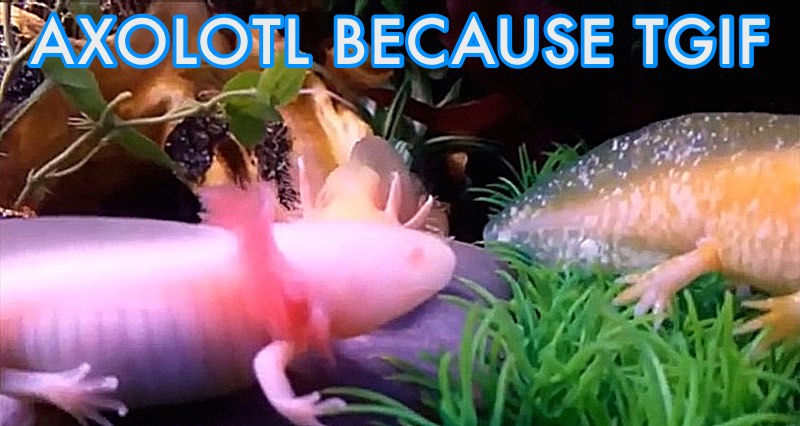axolotl
Enjoy these 6-month-old axolotl because TGIF (video)
Scientists say wild axolotls may be doomed to extinction (video)
Unless the pollution in the lakes and swamps of Mexico City isn’t drastically reversed, scientists say, there will be no more of the cute little axolotl salamanders living in the wild.
PREVIOUSLY ON AXOLOTLS:
Mas…Scientists say wild axolotls may be doomed to extinction (video)
Mexican biologists wonder: Where have all the axolotls gone?
 You know those uber-cute salamander-like axolotls who are native to the lake system in and around Mexico City? They’re gone.
You know those uber-cute salamander-like axolotls who are native to the lake system in and around Mexico City? They’re gone.
Growing up to a foot long (30 cm) and known as the “water monster” or the “Mexican walking fish”, its only natural habitat is the Xochimilco network of lakes and canals, which are suffering from pollution and urban sprawl.
Biologist Armando Tovar Garza, of Mexico’s National Autonomous University, described an attempt last year by researchers to try to net axolotls in the shallow, muddy waters of Xochimilco as “four months of sampling zero axolotls”.
Mas…Mexican biologists wonder: Where have all the axolotls gone?
Fried axolotl, you’re the juan, you make dinner full of yum (photos)
 Wikipedia: The [totally cute] axolotl, or Mexican salamander (Ambystoma mexicanum) is a neotenic salamander, closely related to the tiger salamander.
Wikipedia: The [totally cute] axolotl, or Mexican salamander (Ambystoma mexicanum) is a neotenic salamander, closely related to the tiger salamander.
Larvae of this species fail to undergo metamorphosis, so the adults remain aquatic and gilled.
It is also called ajolote [ɑːhɒˈlɔte] (which is also a common name for different types of salamander).
The species originates from numerous lakes, such as Lake Xochimilco underlying Mexico City.
Axolotls are used extensively in scientific research due to their ability to regenerate limbs.
They are also totally delicious when deep-fried in Osaka, Japan:
Mas…Fried axolotl, you’re the juan, you make dinner full of yum (photos)




